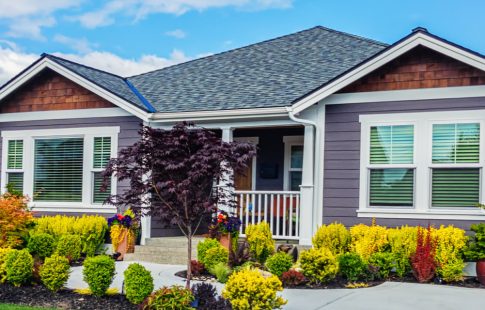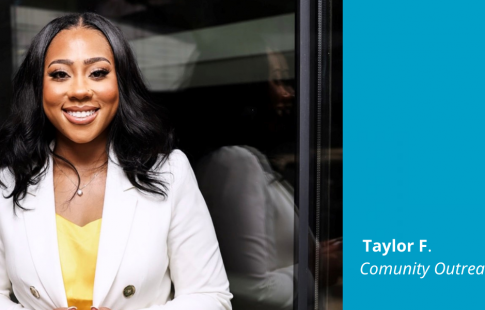Estimated reading time: 5 minutes
Is your home underinsured? Many sources say that 2/3 of homeowners don’t have enough insurance to rebuild after a total loss. Additionally, as inflation and homebuilding costs have gone up, experts have warned homeowners to doublecheck their policy amounts. This is a critical step since many homeowners don’t discover a shortfall until it’s too late. With that in mind, here are steps you can take to be prepared.
How do homes become underinsured?
Underinsurance can result from a range of factors, including when:
- Your home’s value goes up, but your insurance policy limits don’t.
- You do home improvements that increase your home’s value but don’t report them to your insurance company.
- Construction prices rise, making the cost to rebuild your home more expensive. As an example, the National Association of Home Builders recently announced that the average price of framing lumber for a new single-family house had gone up 19.8% compared to a year before.1
- There are gaps in your coverage, meaning your policy either doesn’t cover certain types of damages—e.g., water backups and earthquakes—or your policy limits are too low.
A common gap is caused by “the 80% rule.” Investopedia describes the 80% rule as when “an insurer will only cover the cost of damage to a house or property if the homeowner has purchased insurance coverage equal to at least 80% of the house’s total replacement value.”
Why isn’t the insurance your mortgage company requires necessarily enough?
While mortgage companies generally require homeowners to carry homeowners—or “hazard”—insurance, their standards may vary from your needs. Depending on the type of insurance, you may only be required to cover the lower of either the replacement cost of your property or its unpaid mortgage balance (UPB).
For example, if your UPB is $80,000 but the replacement cost for your home is $200,000, you will need to carry a minimum insurance of $80,000 total. This can create a $120,000 shortfall ($200,000 – $80,000 = $120,000) in the event you need to completely rebuild your home.
How can you protect your home from being underinsured?
There are a few practical ways to ensure your home has enough insurance:
1. Base your homeowners insurance coverage on your home’s reconstruction cost, not its market value
It may seem obvious to insure your home based on how much you bought it for or could sell it for today. But experts say you should focus on how much it would cost to reconstruct your home and replace your belongings. This could be key because your home’s value could go down while construction costs go up.
To estimate a value, experts also say to deduct your home’s land value from the overall property value. Otherwise, you could be over-insured and pay a higher premium than you need. Talk to your insurance agent about land coverage and best policy limits.
If the resulting premium is a concern, the Insurance Information Institute (Triple-I) recommends raising your deductible. They note that increasing a deductible “from $500 to $1,000 could save you up to 25% on your premium payments.”
2. Think about buying flood insurance
Purchasing flood insurance can play a central role in avoiding being underinsured. Floods are the most common natural disaster, but flooding generally isn’t covered by standard homeowners insurance policies.
Many homeowners also underestimate their flood risk. According to Floodsmart.gov, 40% of the National Flood Insurance Program’s claims from 2014–2018 were policyholders who lived “outside of high-risk flood areas.” They add that just an inch of flood water can create over $25,000 in damage.
If you don’t live in a high-risk area or floodplain, keep in mind that you may need flood insurance for a variety of reasons. As FloodSmart.gov cautions, “Flooding can happen anywhere at any time. Poor drainage systems, summer storms, melting snow, neighborhood construction, and broken water mains can all result in flooding.” Disasters, such as hurricanes, can also cause flooding that may not be covered by your policy, as well as melted snow and drainage problems.
If you live in an area prone to flooding, your mortgage company likely requires flood insurance and monitors it to ensure you have enough coverage. In the event you pay off your mortgage, experts advise maintaining flood insurance into the future.
3. Review your homeowners insurance with your insurer regularly
According to Triple-I, there are four triggers that should prompt a policy review:
- Policy renewal time: Insurance policies usually renew every year. Take this time to ask your insurance agent about other policies you may need such as earthquake, flood, or sewer backup coverage. It can also be a good time to renegotiate your deductible, discounts, or to shop for a better rate.
- Home improvements or big purchases: Contact your insurer if your home has been renovated or you’ve bought big-ticket items—from electronics to expensive paintings—that may require your policy limits to increase.
- Appliance and safety upgrades: Follow up if you’ve installed a burglar or fire alarm system, or upgraded major home systems, such as your HVAC, electrical wiring, or plumbing. Your burglar and fire alarms may also net you an added discount.
- Household changes: Check your policy after major events, such as getting married or divorced, starting an at-home business, or having an adult child move back in.
As a sidenote, you should also notify your homeowners insurance company about new pets. Adding a cat or dog—or more exotic pets like a snake or ferret—may change your insurer’s requirements. For example, if you have a dog, Triple-I notes that your insurer may require you to sign a liability waiver or pay a higher premium, among other things.
By staying connected with your insurer and being aware of your changing needs, you can avoid a home that’s underinsured. For more information on how to stay prepared or how to respond to a disaster, check out our Natural Disaster Assistance & Planning page.
___________________________
1. As of the week ending Nov. 8, 2024
Any third party trademarks and tradenames used on the Mr. Cooper® Blog are the property of their respective owners. Nationstar Mortgage LLC d/b/a Mr. Cooper is not affiliated, associated, or sponsored by any of these owners. Use of these names and trademarks is not intended to and does not imply endorsement but is for identification purposes only. Information provided does not necessarily represent the views of Mr. Cooper. Information is subject to change without notice.







